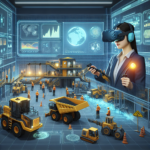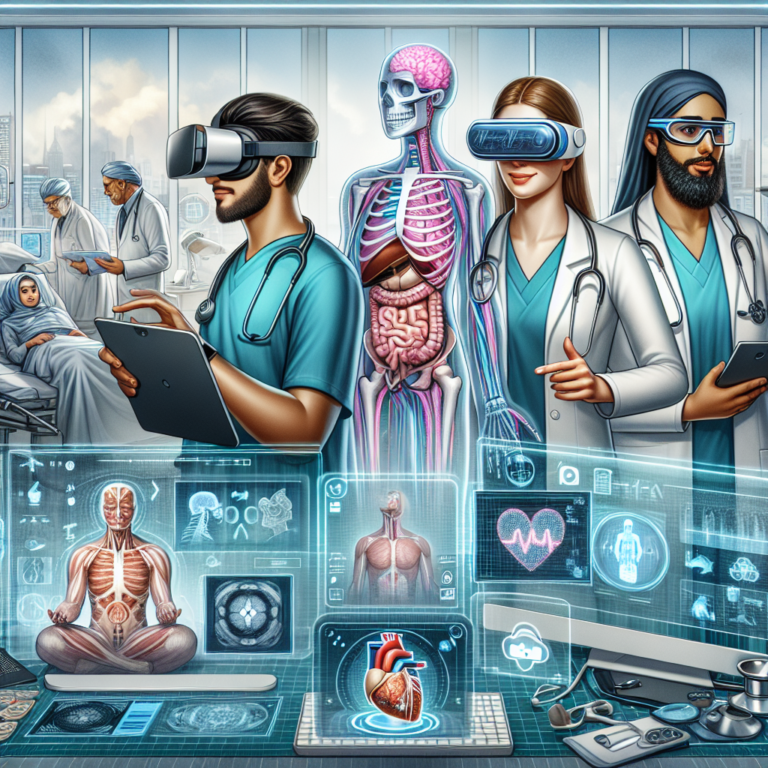Revolutionizing Healthcare: The Impact of VR and AR on Medical Training and Patient Care 🌟
Embracing Immersive Technologies in Healthcare
The landscape of healthcare is undergoing a remarkable transformation, thanks to the advent of immersive technologies such as Virtual Reality (VR) and Augmented Reality (AR). These cutting-edge innovations are enhancing medical training and patient care at an unprecedented rate. The global VR/AR healthcare market is projected to reach a staggering $18.7 billion by 2028, showcasing immense growth potential in this sector.
Immersive Healthcare: A Leader in AI-Enabled Medical Training Simulations
At the forefront of this revolution is Immersive Healthcare, a company specializing in AI-enabled medical training simulations. Their innovative training modules utilize virtual humans to create engaging, context-driven scenarios that promote an optimal learning experience for healthcare professionals and students alike.
- Immersive Healthcare focuses on providing safe, risk-free learning environments.
- They implement AI analytics to deliver objective, evidence-based assessments.
- The company offers valuable performance data for administrators to monitor progress in training simulations.
Transforming Medical Training with VR and AR
The integration of VR and AR in medical training is revolutionizing how healthcare professionals acquire skills. Here’s a closer look at some of the key benefits and applications:
Enhanced Learning Outcomes
Utilizing immersive technologies allows for better and safer training outcomes. Some key benefits include:
- Portability and Flexibility: Trainees can access simulations anywhere, making learning more convenient.
- Unlimited Repetitions: Simulations can be repeated as often as needed, aiding skill retention and proficiency.
- Reduced Cognitive Load: Immersive scenarios streamline learning, enabling trainees to focus better.
- Integrated Eye Tracking: This technology measures trainee performance, enhancing feedback and learning.
Promising Use Cases
VR and AR have been effectively adopted in various medical training aspects, including:
- Anatomical Education: Students can visualize human anatomy in 3D, enhancing understanding and retention.
- Healthcare Workforce Training: Scenarios simulate real-life situations, allowing practice without risk.
- Surgical Simulations: Trainees practice surgical procedures in a controlled, immersive environment.
Companies like Touch of Life Technologies and Laerdal are pioneering the use of immersive technologies in anatomical education and surgical simulation, paving the way for a new era in medical education.
The Role of Immersive Technologies in Patient Care
Beyond training, immersive technologies are making significant impacts on patient care as well. Here’s how VR and AR are optimizing the healthcare experience for patients:
Patient Education and Communication
VR and AR provide hyper-realistic models that enhance patient understanding of their health conditions. This improves communication between healthcare providers and patients, leading to better-informed decisions about treatment options.
Innovative Mental Health Treatment
VR is playing an essential role in mental health therapy by creating controlled environments to confront fears, manage anxiety, or promote relaxation. Studies show that:
- Exposure Therapy: Helps patients with anxiety disorders by allowing them to face their fears in a safe, simulated environment.
- Pain Management: VR therapy is effective at reducing patient pain levels during procedures, minimizing the need for medication.
- Physical Therapy: VR-assisted rehabilitation has shown improvement in patient success rates, especially in stroke recovery.
Telemedicine and Remote Collaboration
The rise of virtual clinics and telemedicine integrated with VR and AR technologies allows healthcare professionals to provide exceptional patient care, even from a distance. This integration facilitates remote mentoring, collaborations, and consultations, breaking down geographical barriers to access.
Future Trends: Setting the Stage for a New Era in Healthcare
As we look ahead, several future trends promise to shape the healthcare landscape further:
- Personalized Treatment Plans: AI and VR technologies will allow for tailored healthcare experiences based on individual needs.
- Holographic Displays: These innovations will enable visualization of complex data in real time, potentially enhancing surgical precision.
- Wearable Devices: Integration of VR and AR with wearable tech will revolutionize patient monitoring and intervention.
- Medical Education Platforms: Virtual health assistants will guide learners through immersive experiences.
- Blockchain for Health Data Security: Ensuring secure access to patient data while maintaining privacy.
- 5G Technology Integration: Promising faster data transfer for seamless telemedicine experiences.
Challenges Ahead: Navigating the Road to Widespread Adoption
Despite the exciting potential of VR and AR in healthcare, several challenges remain:
- Cybersickness: Some users experience discomfort during immersive experiences, a challenge developers are working to alleviate.
- Cost and Accessibility: Implementing advanced technologies can be expensive for healthcare resources, limiting widespread usage.
- Need for Training: Healthcare professionals must be trained in using these technologies to maximize their benefits.
Efforts are ongoing to address these challenges, ensuring that immersive technology becomes a vital tool in modern medicine, paving the way for a healthcare system tailored to the needs of both patients and professionals.
Conclusion: The Era of Immersive Healthcare is Here!
With immersive technologies taking center stage, the future of healthcare is bright. As VR and AR continue to evolve, they promise to deliver customized, engaging, and efficient healthcare experiences for all involved. The possibilities are endless, and the journey into this transformative era is just beginning! 🌈




0 Comments